A Historic Meeting at the Elbe
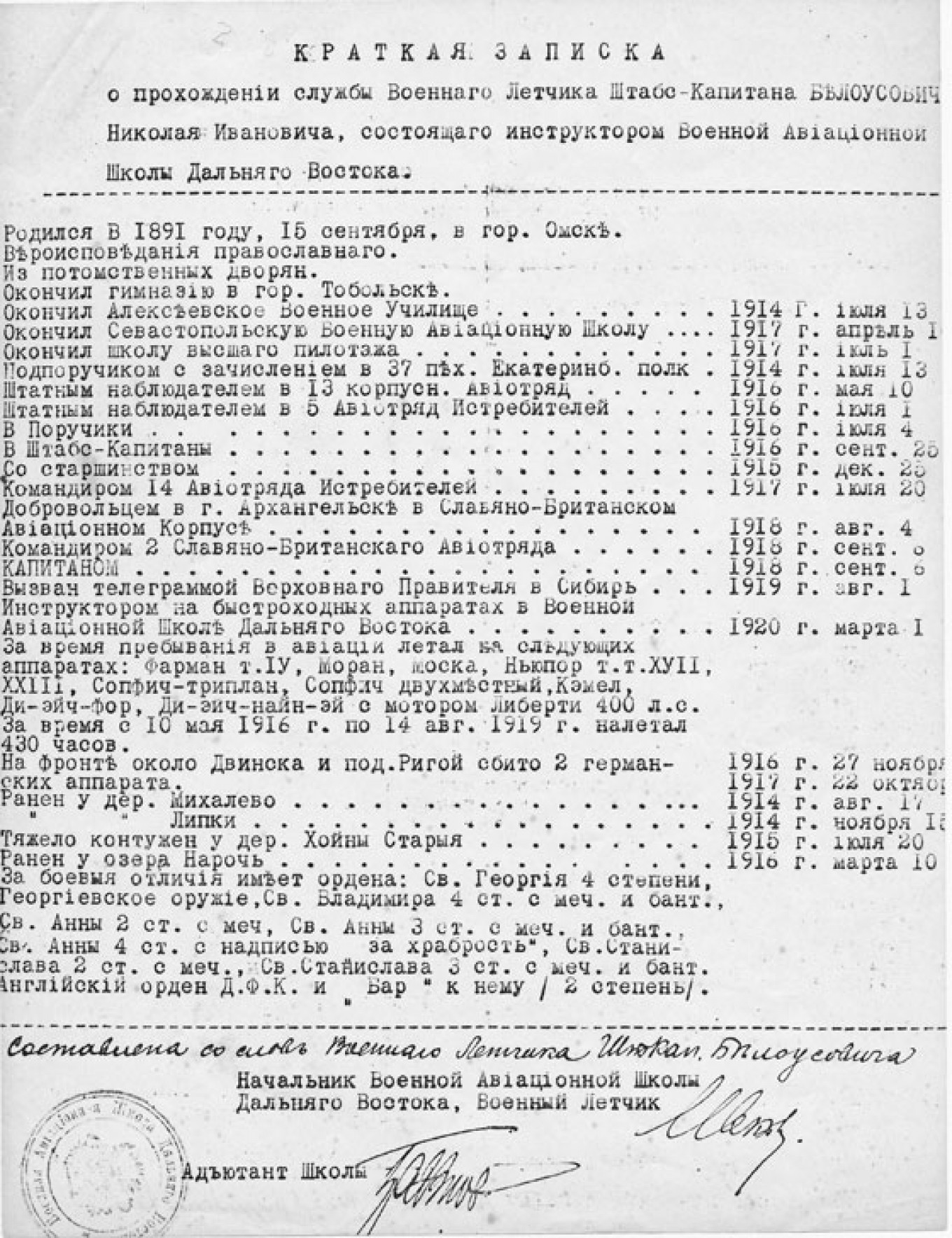
Former U.S. soldier and intelligence officer Igor Belousovitch's father, Nikolai Ivanovich, was a flyer in the Russian tsar's airforce. This document, his military record, was made in approximately 1920, at the Far East aviation training school in Vladivostok, where he was serving as an instructor. It notes his receiving the St. Georges Cross, the highest decoration of valor. Nikolai Ivanovich had started as a company commander on the front in WWI, but then transferred to a non-command position in aviation. When his son asked him why he decided to transfer to aviation, Nikolai Ivanovich answered, "I got tired of the mud."
Courtesy of Igor Belousovitch
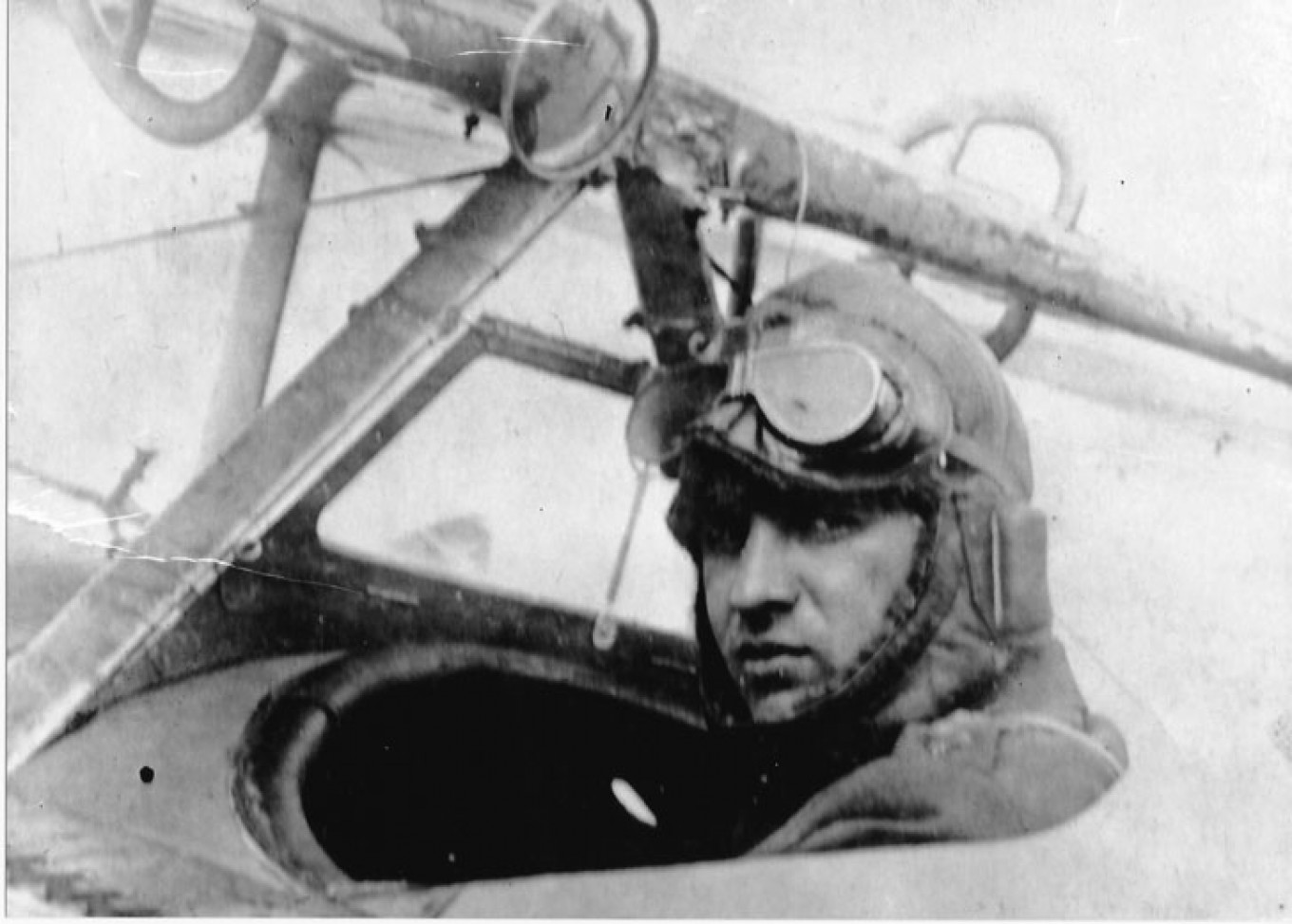
A photograph of his father, approximately 1916, working as a flying observer on the Austrian front.
Courtesy of Igor Belousovitch
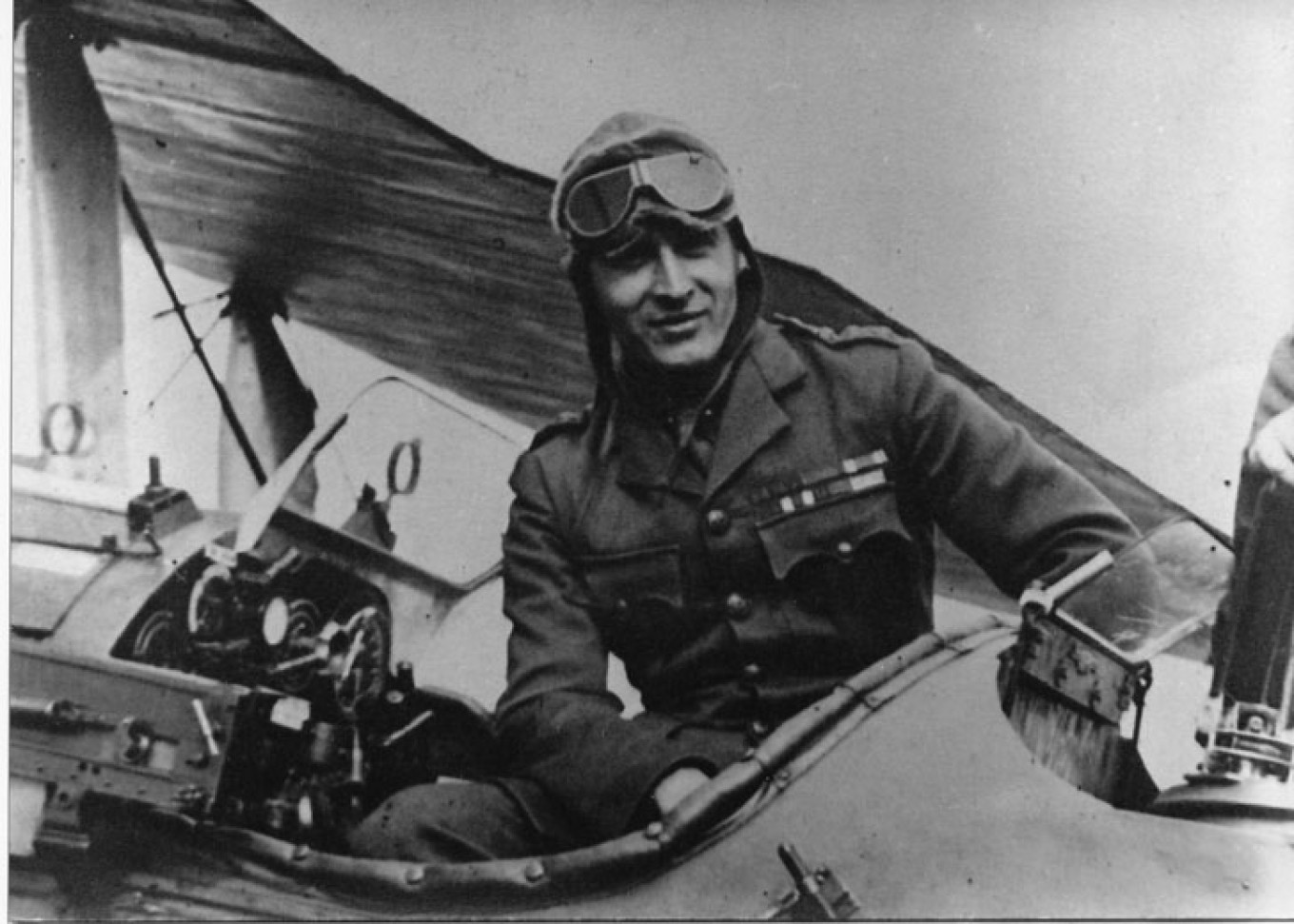
Belousovitch's father, Nikolai Ivanovich, in a plane, already during the civil war, in a British supplied uniform. This was when the British, during their "intervention," had taken control of part of the north and organized a Slavo-British aviation squadron. He flew in that squadron until the British retreated and went home.
Courtesy of Igor Belousovitch
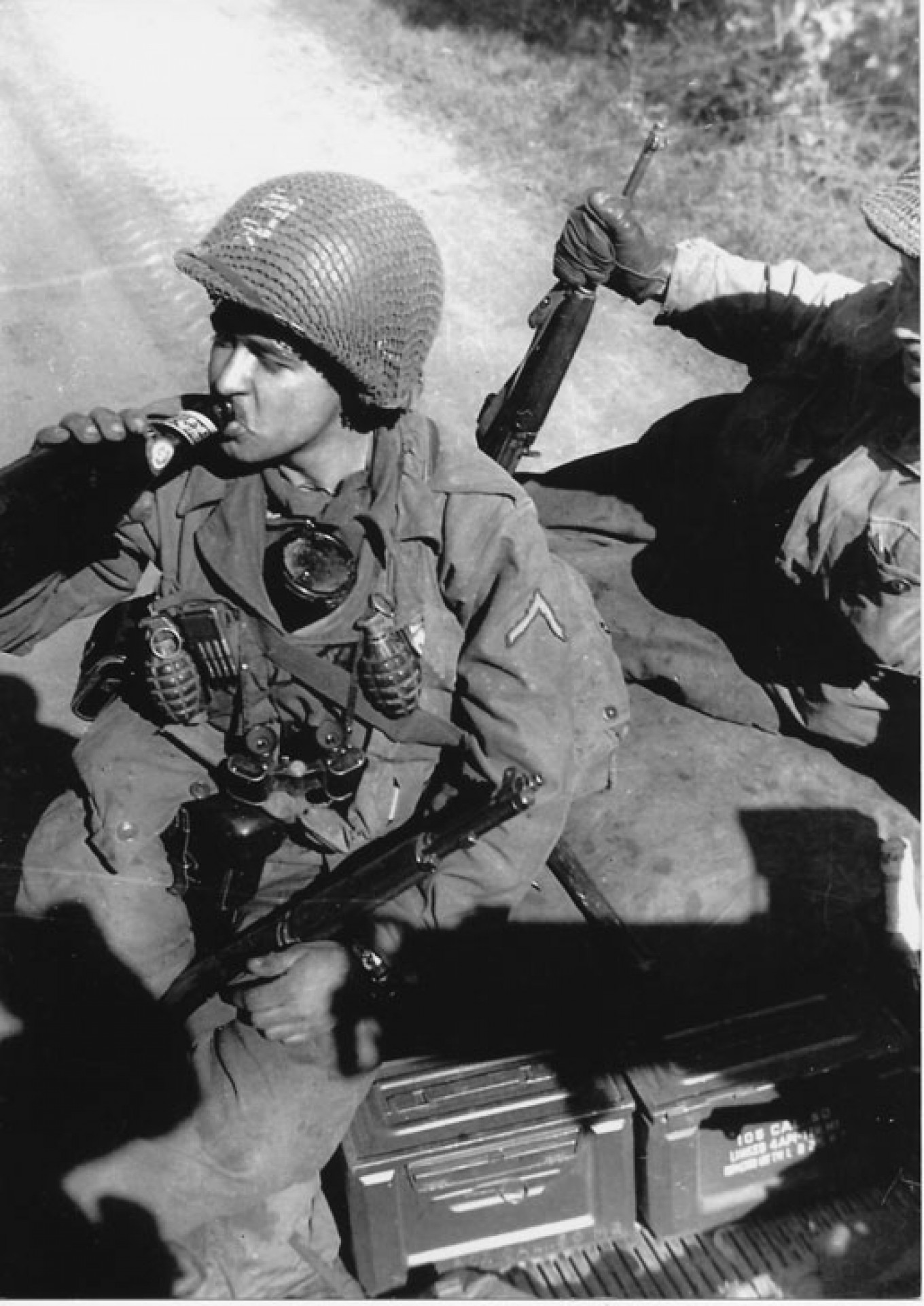
U.S. soldier Igor Belousovitch drinking wine on a tank, after his division, the 69th, took Leipzig, Germany (in wine country) in April 1945, a few weeks prior to the historic linkup between American and Soviet forces on the Elbe. (Related articles: Q&A: Kremlinologist's Russian Skills, Preserved in Alcohol; A Soldier Bridges the Gap on the Elbe)
Courtesy of Igor Belousovitch
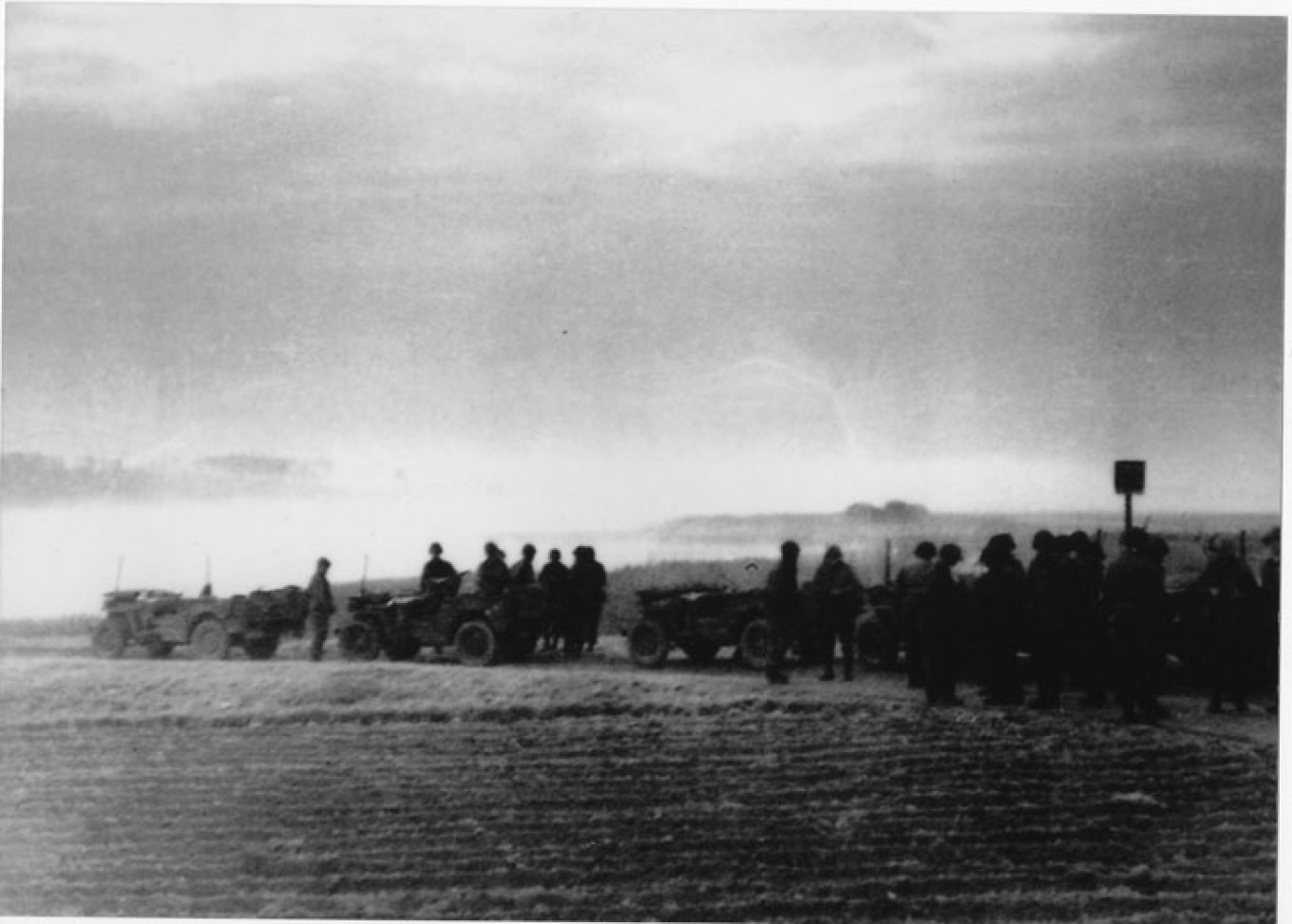
Dawn on April 25, 1945. U.S. troops getting ready to cross into the no-mans land next to the Elbe River. Road sign visible on right.
Courtesy of Igor Belousovitch
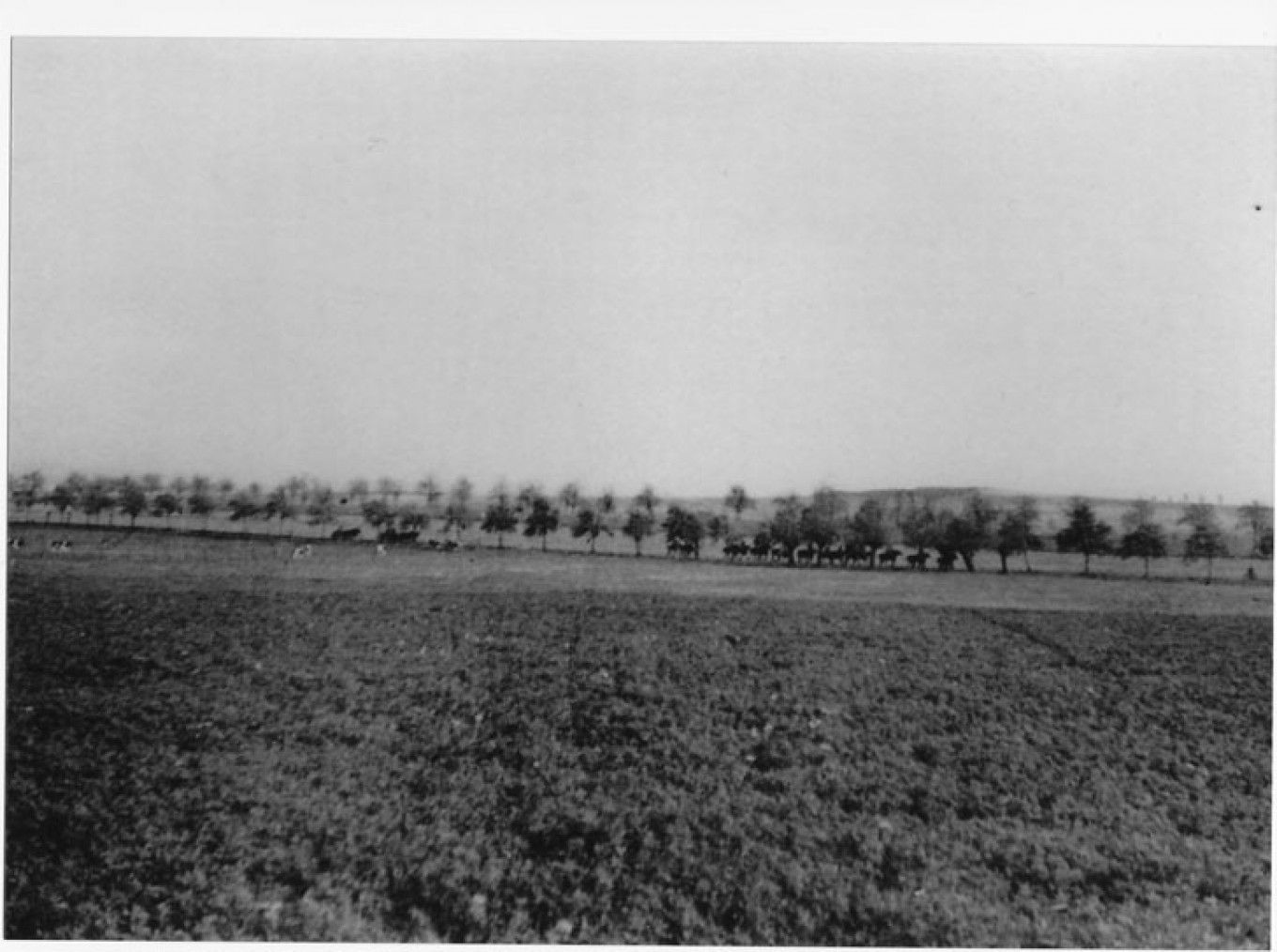
First sighting of the Soviet patrol in the distance. The carts at the rear (left) of the line were used for hauling supplies.
Courtesy of Igor Belousovitch
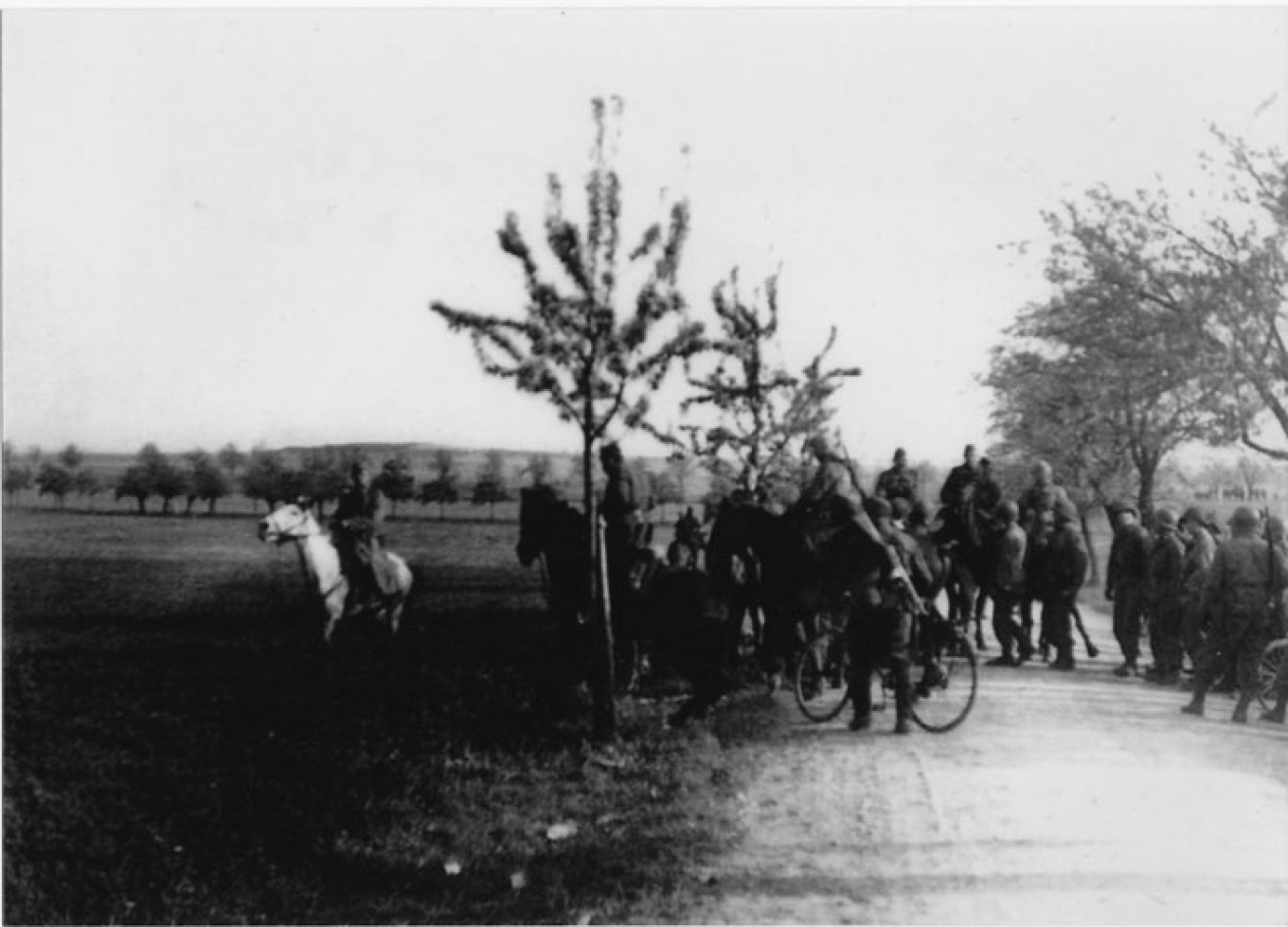
First approach by Belousovitch's division to the Soviet patrol. The bicyclist was their forward recon man and approached first.
Courtesy of Igor Belousovitch
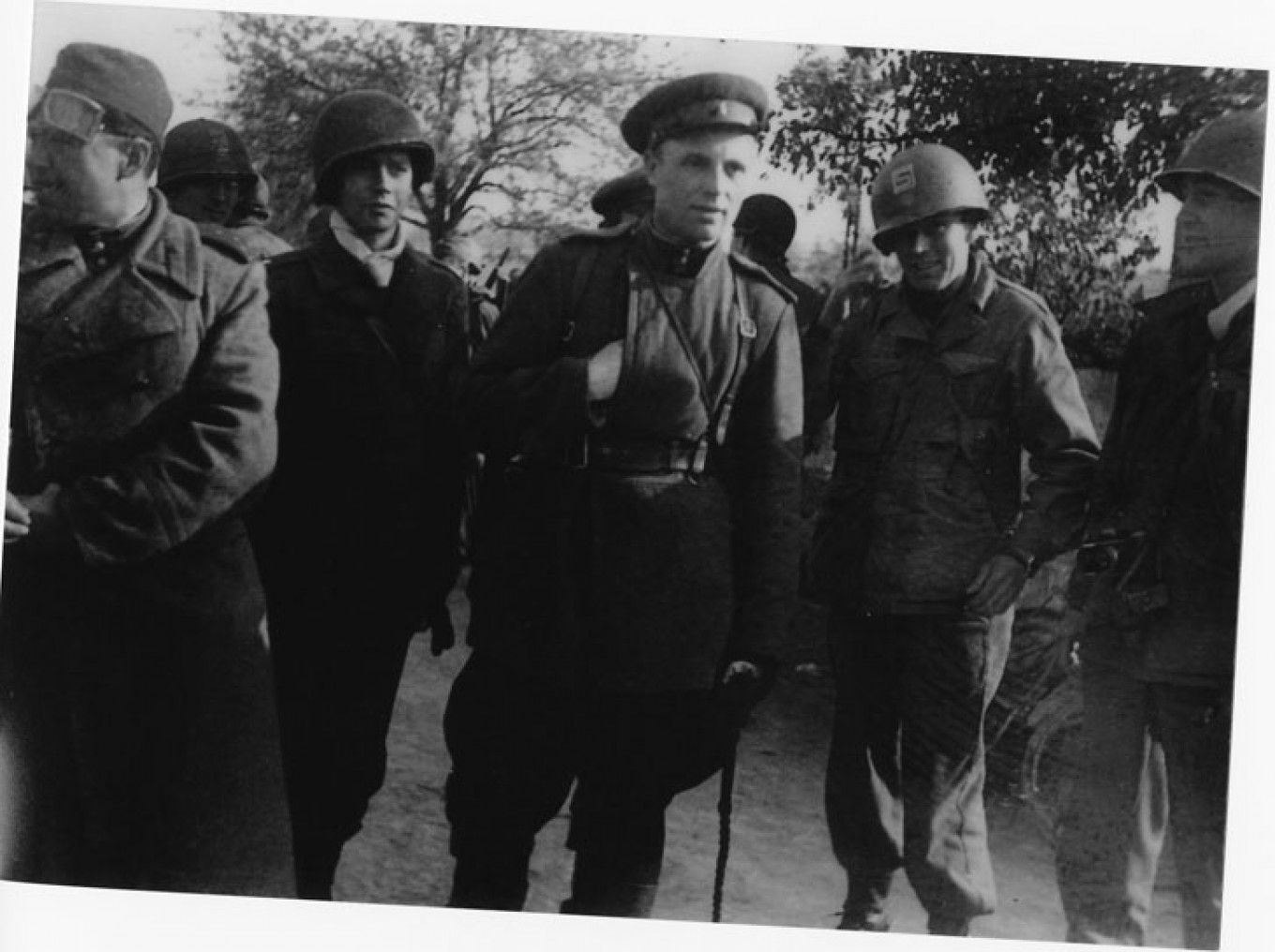
First meeting: a brief discussion. Second from right is Major Craig, commander of the 69th infantry division.
Courtesy of Igor Belousovitch
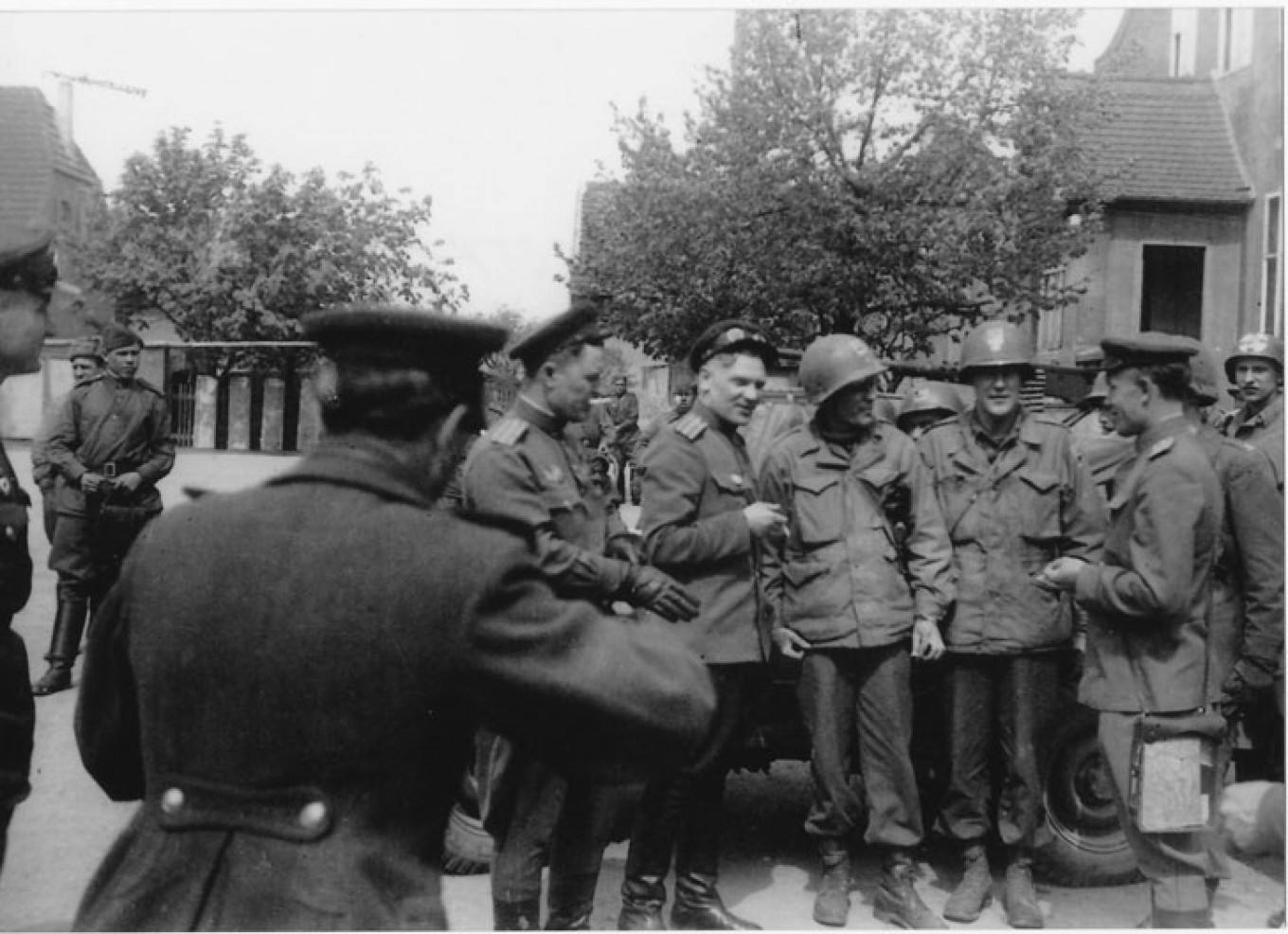
End of the first meeting, again with Major Craig. The discussion was about which road was best to take to get to the Soviet division headquarters.
Courtesy of Igor Belousovitch
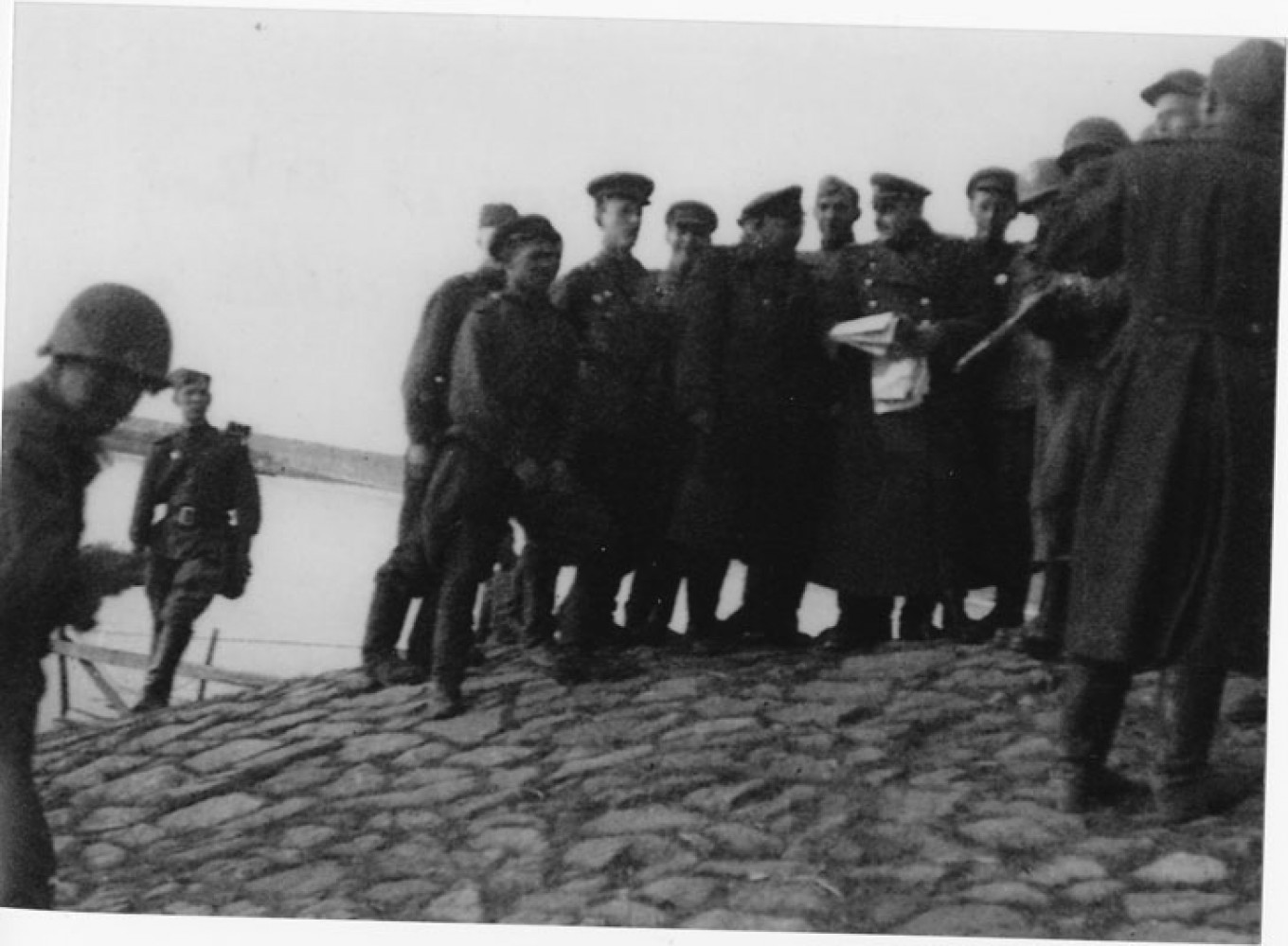
Approach to the Soviet HQ. Sloping riverside of Elbe, with Soviet officers in the background. Staff of the 58th Soviet guards division, already crossed, on the eastern side. The crossing was made in jeeps, on pontoon rafts, pulled back and forth by Soviet troops. Major General Vladimir Rusakov standing with documents.
Courtesy of Igor Belousovitch
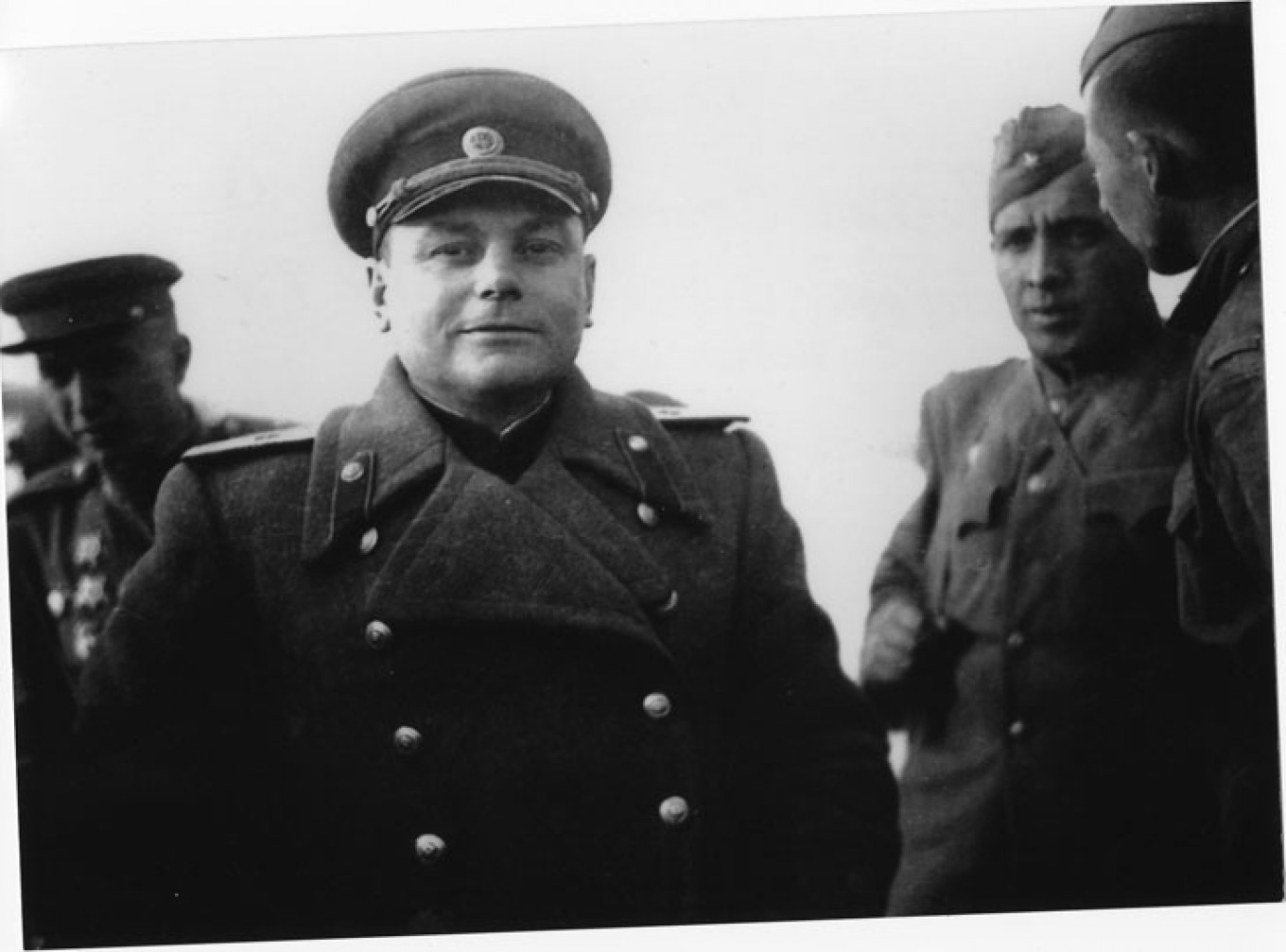
Close-up of Major General Vladimir Vasilyevich Rusakov, commander of the 58th guards division. Many years later, on a trip to the Soviet Union, Belousovitch asked a Soviet sergeant who had been at the Elbe meeting about Rusakov’s fate. He was told the general drank himself to death. Interestingly, there is little information about Rusakov available (note: there are many who have that name and actually fought in the war at the same time he did).
Courtesy of Igor Belousovitch
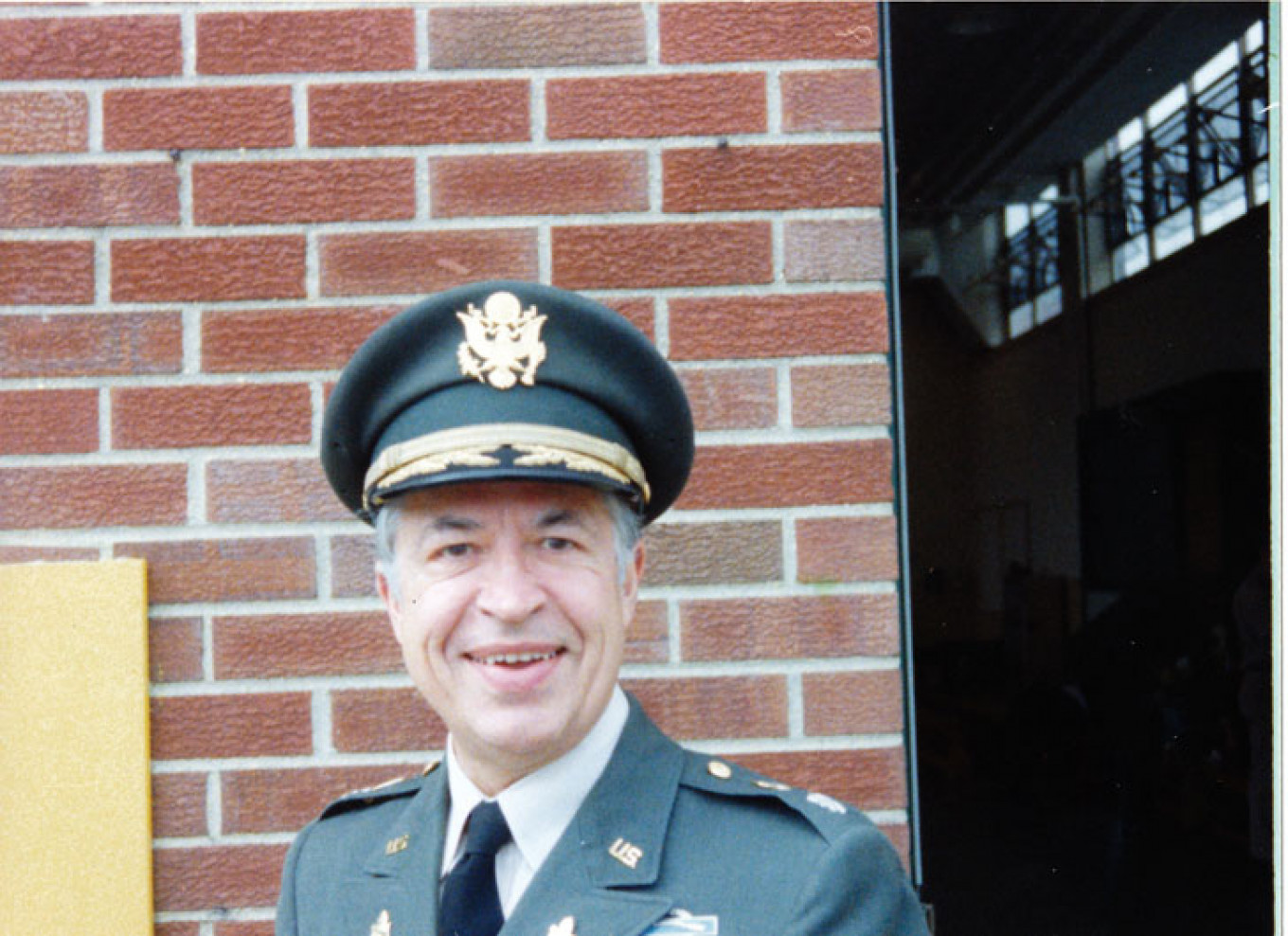
Belousovitch in the 1970s, about the time of his retirement from reserve duty, as a lieutenant colonel. In 1961 he was ordered back to active duty when the Berlin crisis ended with the building of the wall. But he somehow wound up spending a month in Tokyo instead of going to Germany.
Courtesy of Igor Belousovitch

Belousovitch at the time of his retirement from the U.S. State Department, in 1994.
Courtesy of Igor Belousovitch
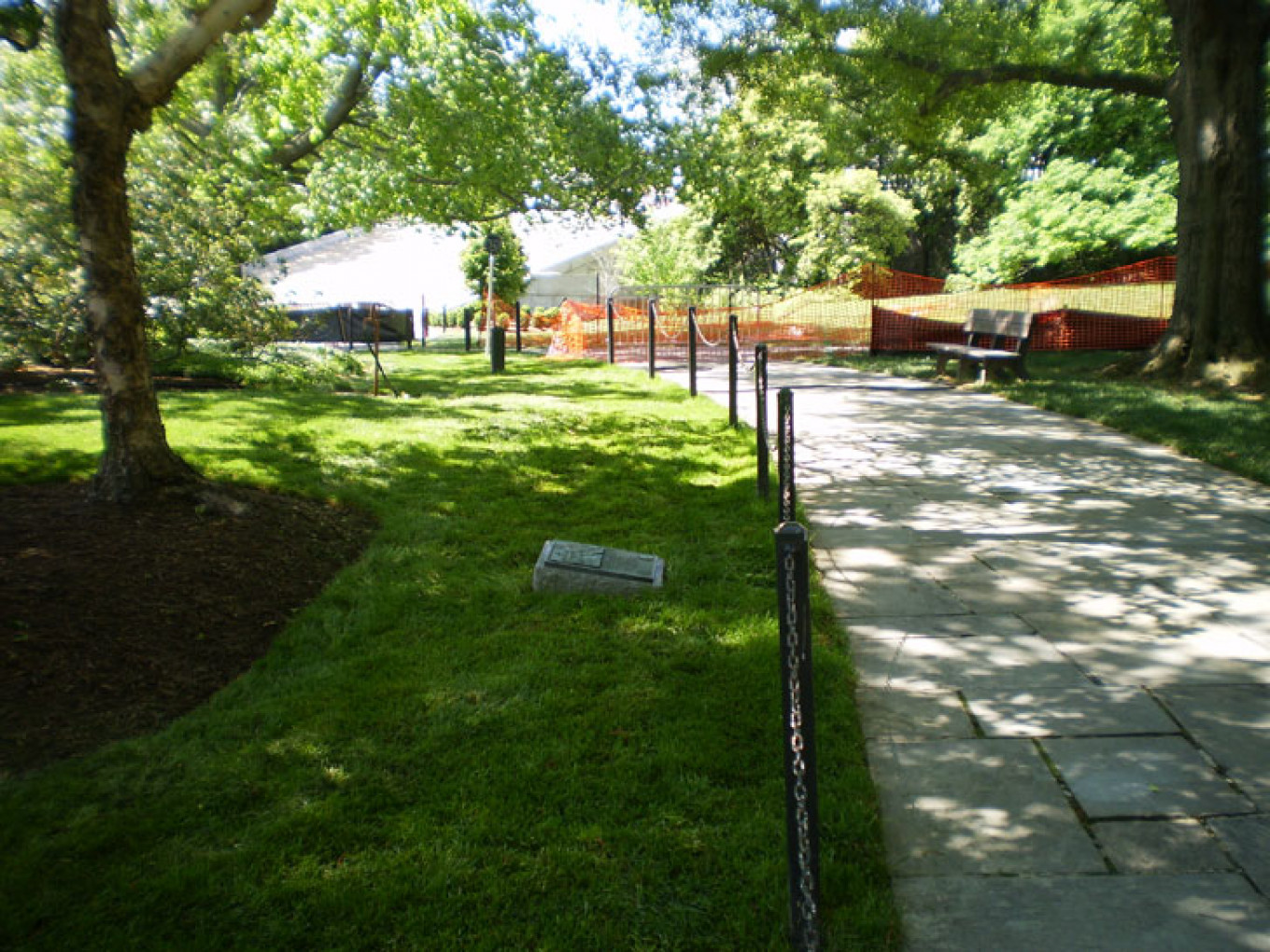
The Elbe plaque at Arlington National Cemetery outside Washington, D.C., with the steps of the Tomb of the Unknown Soldier in the background.
Doug Englund / For MT
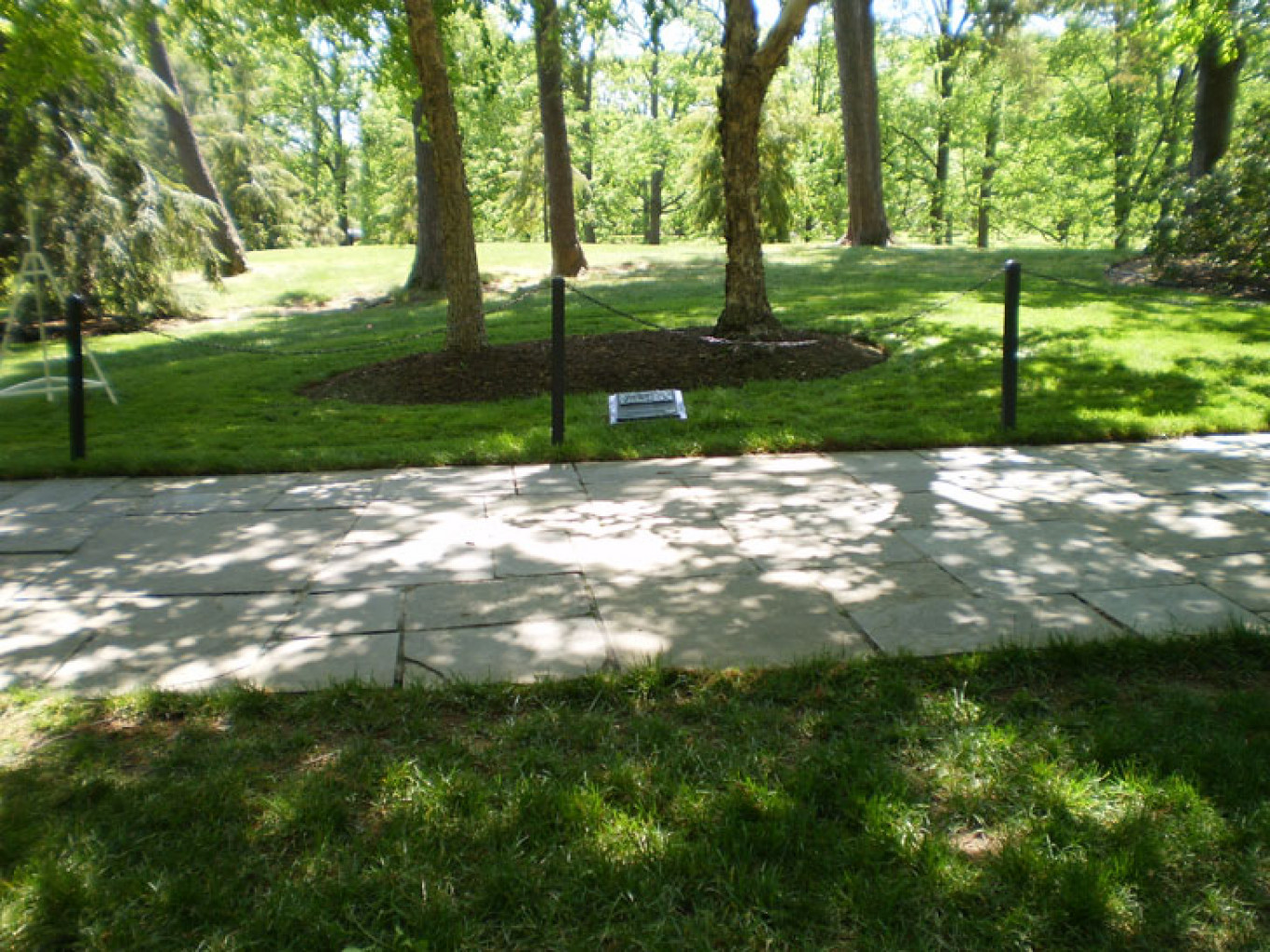
The Elbe plaque and surrounding grove.
Doug Englund / For MT

The Elbe plaque, full view.
Doug Englund / For MT
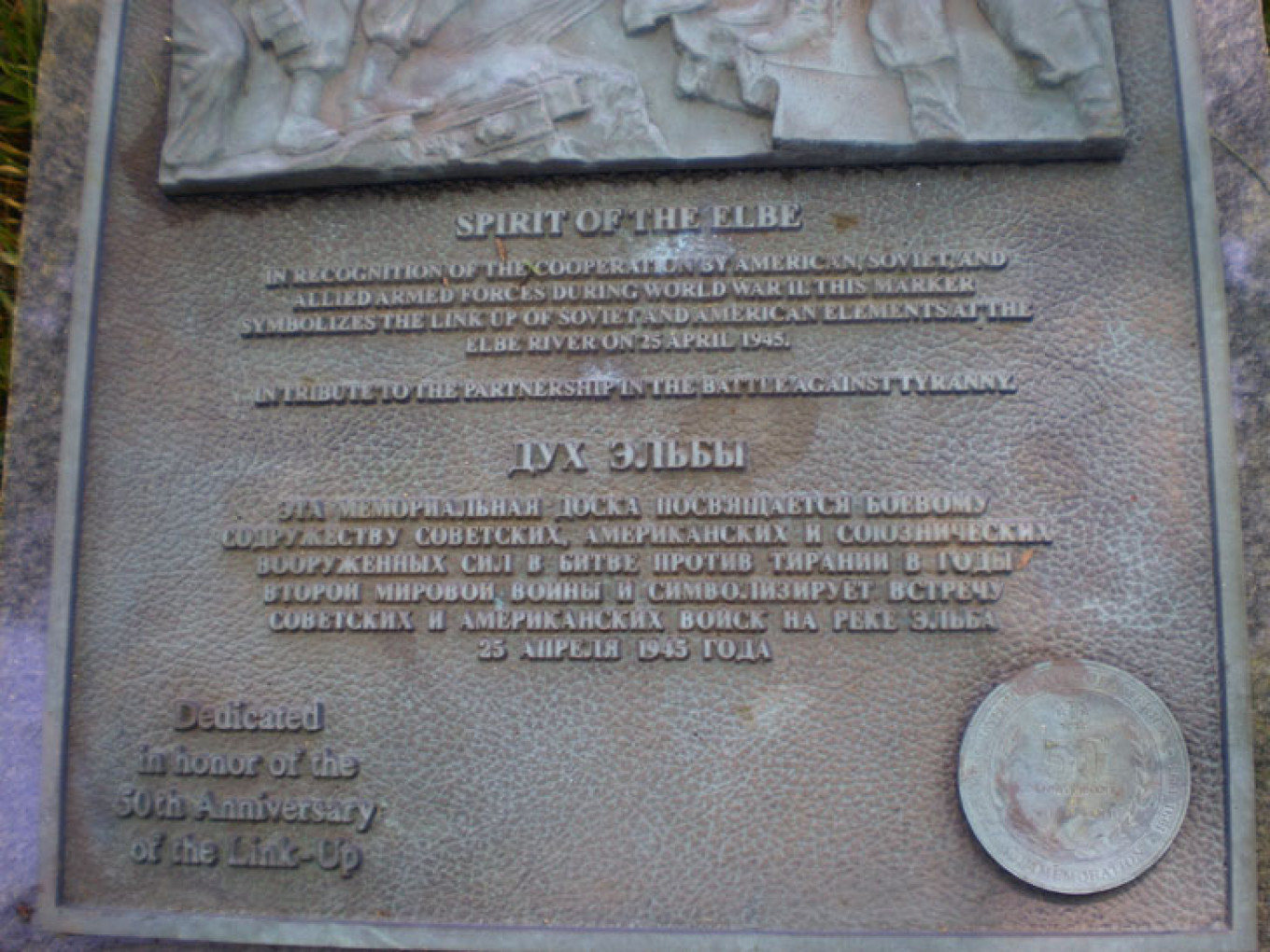
A close-up of the text of the Elbe plaque.
Doug Englund / For MT

